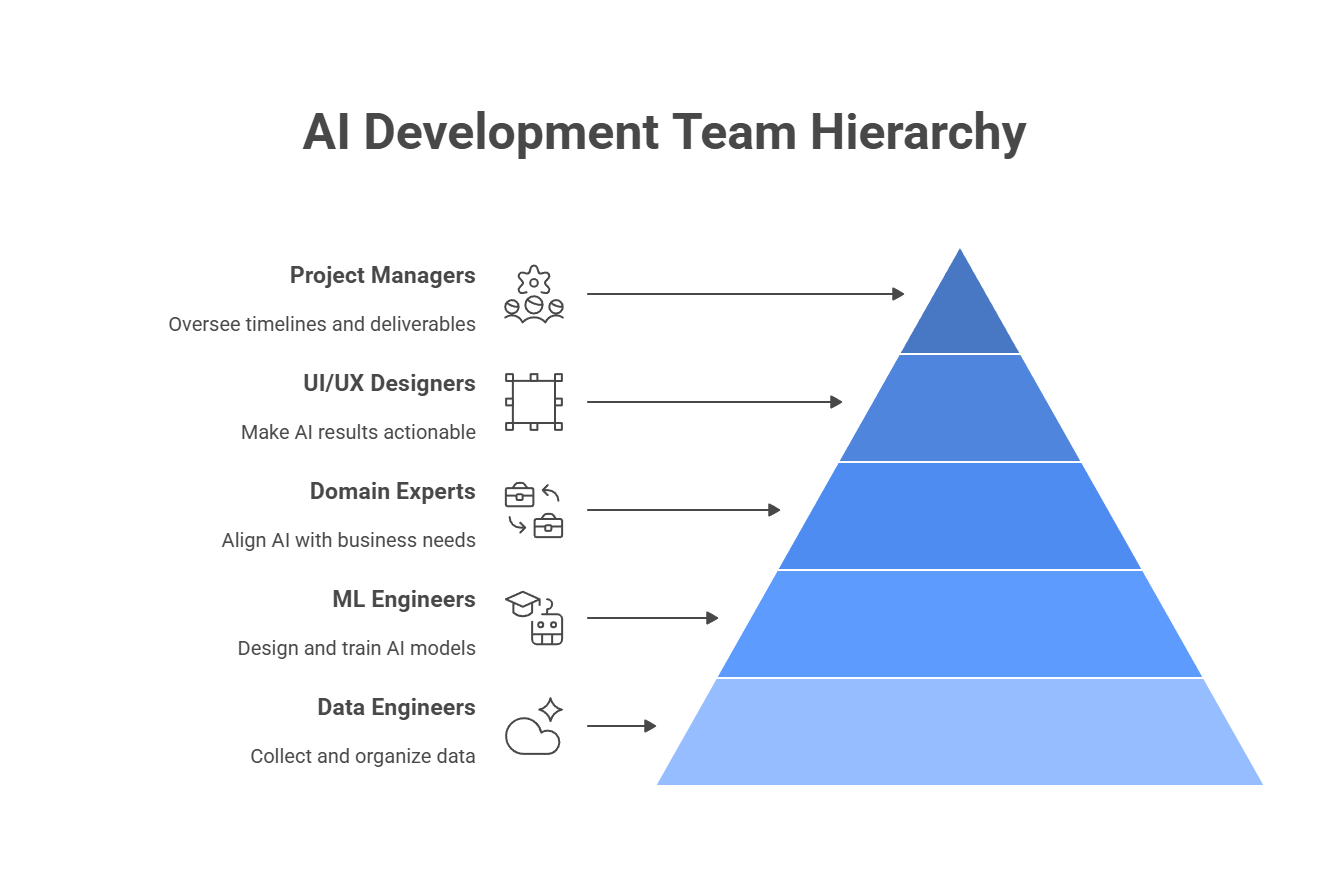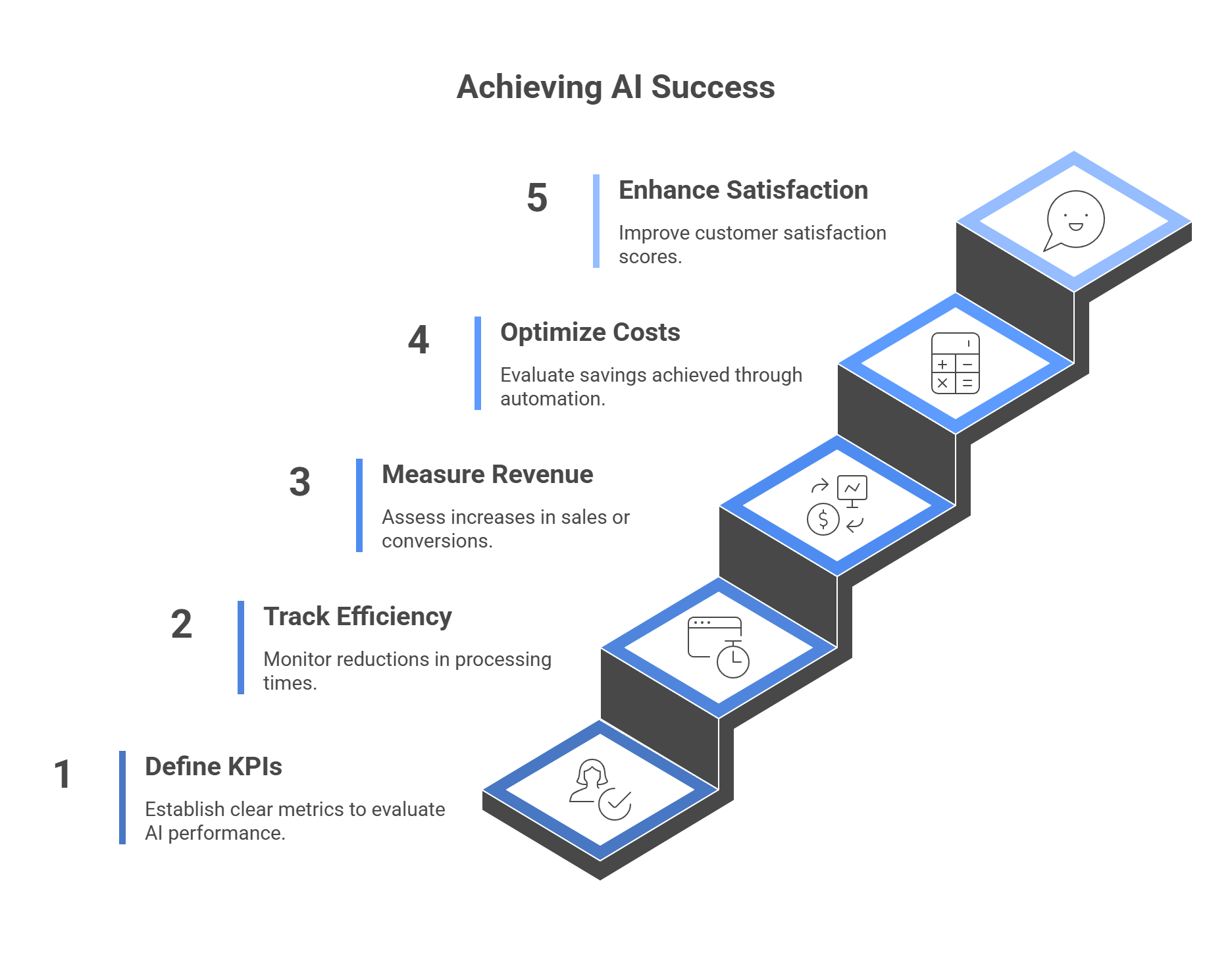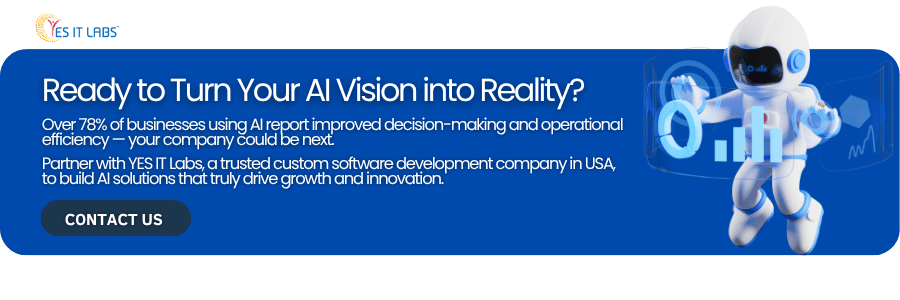Artificial Intelligence (AI) has become a transformative force in modern business. From predictive analytics to intelligent automation, companies are using AI to streamline operations, improve decision-making, and drive growth.
However, not every AI project leads to success. In fact, Gartner reports that up to 85% of AI initiatives fail to deliver measurable business value.
The real challenge lies in developing AI software that addresses specific business needs rather than just adopting AI for the sake of innovation.
This guide explains how to build AI software that actually solves business problems, step by step, based on practical, data-backed strategies.
What Is AI Software in a Business Context?
AI software refers to systems that use data-driven algorithms to simulate human intelligence and improve over time through learning. In business, AI software is applied in areas such as:
- Automating repetitive tasks
- Analyzing large volumes of data
- Enhancing customer experiences
- Detecting anomalies or fraud
- Improving predictive accuracy for decision-making
When designed correctly, AI tools can increase efficiency, reduce costs, and generate insights that directly support business growth. Companies that partner with reliable Offshore Software Development services often gain access to advanced AI expertise at competitive costs, helping them scale AI initiatives faster.
Step 1: Identify the Real Business Problem
Before building any AI solution, start with a clear problem definition. Avoid focusing on the technology first.
Ask these key questions:
- What bottlenecks or inefficiencies exist in the current workflow?
- Which repetitive or data-intensive processes can AI optimize?
- How will solving this challenge impact revenue, efficiency, or customer satisfaction?
Example: Instead of saying “We need an AI chatbot,” define it as “We want to reduce customer service response time by 60%.”
Insight: According to McKinsey & Company, organizations that align AI projects with clear business goals achieve up to 3x higher ROI compared to those without strategic alignment.
Step 2: Gather and Prepare High-Quality Data
Data is the foundation of AI success. Poor data quality leads to inaccurate predictions and unreliable outcomes.
Follow these steps for effective data preparation:
- Aggregate: Collect data from verified internal and external sources.
- Clean: Remove duplicates, handle missing values, and standardize formats.
- Label: Tag data correctly for supervised learning tasks.
- Secure: Ensure compliance with GDPR, CCPA, or local data privacy regulations.
If data is limited, consider using synthetic data generation to train models effectively without compromising accuracy.
Step 3: Choose the Right AI Approach and Technology Stack
Different business challenges require different AI techniques. Selecting the right model is essential for achieving accurate results.
Popular AI approaches include:
- Machine Learning (ML): Predictive analytics, fraud detection, customer segmentation
- Natural Language Processing (NLP): Chatbots, voice assistants, sentiment analysis
- Computer Vision: Image recognition, quality inspection, facial authentication
- Deep Learning: Advanced modeling for unstructured data such as audio or video
Technology stack recommendations:
- Frameworks: TensorFlow, PyTorch, Scikit-learn
- Cloud Platforms: AWS AI/ML, Google Cloud AI, Azure Machine Learning
- Deployment Tools: Docker, Kubernetes, FastAPI
Businesses seeking to leverage these tools often collaborate with a custom software development company in USA that specializes in end-to-end AI implementation, ensuring technical precision and compliance with modern development standards.
Step 4: Build a Cross-Functional AI Team
A successful AI project depends on collaboration between technical and non-technical experts.
Your ideal AI development team should include:
- Data Engineers to collect and organize data
- Machine Learning Engineers to design and train models

- Domain Experts to align AI outcomes with business needs
- UI/UX Designers to make AI results actionable
- Project Managers to oversee timelines and deliverables
Stat: PwC reports that companies with cross-functional AI teams are 2.5 times more likely to achieve scalable business outcomes.
Step 5: Develop, Test, and Continuously Improve the Model
AI model development should be iterative. Build small prototypes, test frequently, and refine based on feedback.
Key phases include:
- Data preparation and training
- Model testing using evaluation metrics (precision, recall, F1-score)
- Validation on real-world data
- Continuous optimization for better performance
Always monitor model drift, which occurs when real-world data patterns change, reducing model accuracy over time.
Step 6: Integrate AI Software with Existing Systems
To be effective, AI software must integrate seamlessly with current workflows and digital infrastructure.
Integration best practices:
- Use APIs for data exchange and communication between systems
- Ensure compatibility with CRM, ERP, and other business tools
- Create user-friendly dashboards for real-time insights
A well-integrated system ensures faster adoption and higher productivity across teams. Partnering with an experienced LLM development company can help businesses integrate large language models into existing workflows for improved automation, customer interaction, and data processing capabilities.
Step 7: Ensure AI Ethics, Fairness, and Explainability
Trust is essential in AI adoption. Stakeholders should understand how decisions are made by the system.
Best practices for ethical AI:
- Use Explainable AI (XAI) models to show how results are generated
- Regularly audit for bias and ensure fair outcomes
- Maintain compliance with AI governance and data ethics standards
Insight: IBM Research found that 91% of companies using explainable AI report higher stakeholder trust and adoption rates.
Step 8: Define Clear KPIs to Measure Success
Without measurable KPIs, you cannot evaluate AI performance effectively.
Track key metrics such as:


- Operational efficiency: Reduction in processing or response times
- Revenue impact: Increase in sales or lead conversion
- Cost optimization: Savings through automation
- Customer satisfaction: Higher Net Promoter Score (NPS)
Establishing these KPIs ensures your AI system stays aligned with real business objectives.
Step 9: Scale, Monitor, and Maintain the AI Solution
Once the AI solution proves successful in a pilot phase, scale it across the organization.
Maintenance checklist:
- Retrain models regularly with updated data
- Monitor performance for accuracy and relevance
- Implement cloud-based scaling for flexibility
- Update for regulatory compliance and cybersecurity standards
Long-term success depends on continuous monitoring and proactive improvements.


Key Takeaway: Building AI Software That Delivers Real Results
Developing AI software that truly solves business problems requires more than technical skills, it demands strategic clarity, clean data, ethical transparency, and ongoing optimization.
As AI adoption continues to grow, with IDC projecting global AI spending to reach $500 billion by 2027, now is the time to invest strategically.
Businesses that approach AI with a clear purpose and a data-driven mindset will be better positioned to increase efficiency, enhance decision-making, and achieve long-term competitive advantage.
Final Thought
AI success is not about how advanced your algorithms are, but about how effectively your software transforms business outcomes. Start small, stay focused on measurable results, and scale with confidence.
Frequently Asked Questions (FAQs)
1. What makes an AI project successful in business?
A successful AI project starts with a clear goal, uses clean data, aligns with business strategy, and includes measurable KPIs.
2. How long does it take to build AI software?
Depending on complexity and data availability, developing AI software typically takes between 3 to 9 months, including testing and deployment.
3. What is the biggest reason AI projects fail?
Most AI projects fail due to poor data quality, unclear objectives, or lack of integration with existing business systems.
4. How can small businesses benefit from AI?
Small businesses can use AI for automating customer service, analyzing sales trends, optimizing marketing, and improving inventory management.
